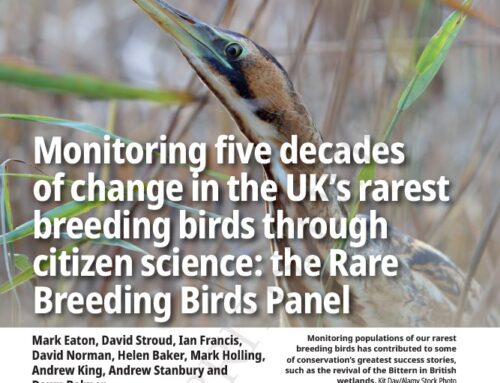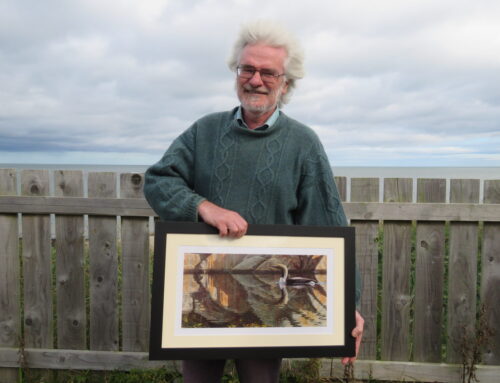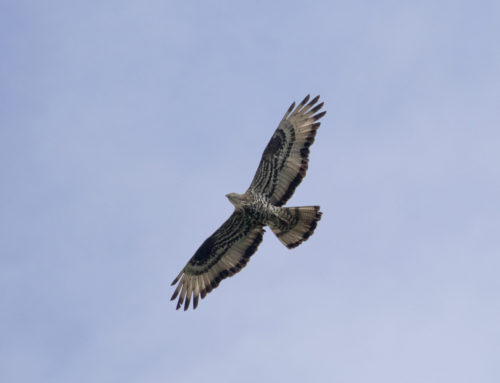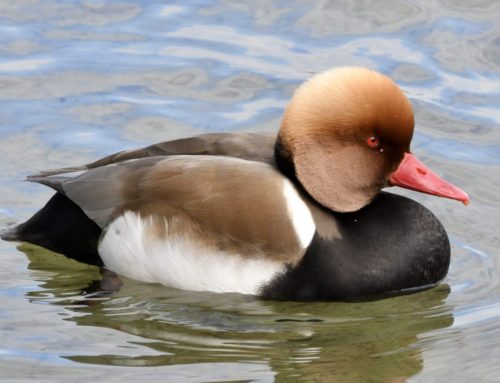Results of the 2020-21 British Honey-buzzard survey

Honey-buzzard, Dawn Balmer
Honey-buzzards are tricky birds to birds to survey, being secretive and hard to detect, spending most of their time below the woodland canopy. Furthermore, those who study Honey-buzzards have historically been as secretive as the birds themselves, reluctant to divulge details of the breeding locations of birds even to the Rare Breeding Birds Panel. Consequently, there has long been uncertainty about the size and distribution of breeding population in Britain. That said, it is evident that the population has increased in the years since the formation of the Panel. In the 1970’s there were believed to be some 10-15 pairs in southern England, but Panel reports are ripe with comments about data being withheld, particularly from the stronghold in the New Forest.
The total of pairs reported reached double figures for the first time in 1982 and exceeded 20 in 1991; around this time there was a growing awareness that Honey-buzzards were to be found in areas away from southern England, with breeding records in Wales and Scotland. The first national survey for Honey-buzzard was conducted in 2000, and found 59 territories, with ten of these in Wales and 14 in Scotland (Ogilvie 2003, with recent reanalysis by Mark Holling).
Given the now wide distribution of Honey-buzzards in Britain, and the difficulties of finding secretive pairs in large expanses of suitable habitat, annual totals as reported to the RBBP have ranged between 34 and 47 pairs over the last decade. This is below the level reported by the 2000 survey and was believed to be well below the real population. Thus, a national survey was organised for 2020, led by Rob Clements in England, Steve Roberts in Wales, and Ken Shaw, Chris McInerny and Carol Miller in Scotland, with support from the RBBP. Results from this survey have been published this month in the April issue of British Birds (Clements et al. 2022) (available by subscription at www.britishbirds.co.uk).
Whilst Covid lockdowns had a sweeping impact on bird monitoring programmes in 2020 (e.g. see Gillings et al. (2021) for a review of the effect on outputs from the BTO/JNCC/RSPB Breeding Bird Survey) and will have a substantial influence on the RBBP’s report for 2020, it was possible to proceed with the Honey-buzzard survey largely as planned. The key period for surveying Honey-buzzards is in the late summer, July-August, when birds may display above territories and then later on may be seen carrying food to young. By July 2020 lockdowns had been lifted throughout Britain, allowing many volunteers to get out to survey by making lengthy watches from vantage points in suitable weather conditions.
The coordinators decided to continue the survey in 2021, as lockdowns had impacted some early season coverage, and large areas of apparently suitable habitat in the north of Britain had not been covered. Caution has to be applied to producing an estimate based on data from both years combined, however, as this might result in overestimation given the potential for pairs to move between years.
Table: the number of territories reported in the 2000 survey (following reanalysis), and in 2020 and 2021.
| Country | 2000 | 2020 | 2021 |
|---|---|---|---|
| England | 35 | 55 | 50 |
| Scotland | 14 | 49 | 48 |
| Wales | 10 | 5 | 4 |
| British total | 59 | 109 | 102 |
As was anticipated, the survey results indicate that British Honey-buzzard population has increased substantially since 2000, and is far higher than the totals reported to the RBBP annually. The increase over the last two decades has been most marked (over three-fold) in Scotland, whereas numbers have halved in Wales. Notably over areas in western Britain – Devon, Shropshire, Cumbria, Argyll and Dumfries & Galloway – have either suffered a reduction in numbers or lost their breeding Honey-buzzards entirely. The bulk of the population is now in southern England, most notably Hampshire and Sussex, and in central and northern Scotland. Clements et al. (2022) discuss the changes to the population in more detail. Furthermore, they suggest that, given the likelihood of territories remaining undiscovered in spite of the 2020-21 survey efforts, the population is probably still underestimated and might possibly be as high as 150 pairs.
Finally, I would like to echo the closing comments of the paper: “Finally, we strongly encourage finders of Honey-buzzards to submit their records to appropriate recorders… such information is important for conservation reasons as it can inform windfarm applications, prevent the unintended loss of nests through forestry operations and assist RSPB investigations with potential egg-collecting cases, for example.”
We’d like to thank the survey coordinators for their efforts to improve our knowledge on the status of this fascinating species, and all those volunteers who took part in the survey.
Dr Mark Eaton, RBBP Secretary
References
Clements, R., Shaw, K.D., McInerny, C.J., Miller, C., & Roberts, S. 2022. British Honey-buzzard survey 2020–21. British Birds, 115: 190–197.
Gillings, S., Balmer, D.E., Harris, S.J., Massimino, D. & Pearce-Higgins J.W. 2021. Impacts of COVID-19 restrictions on capacity to monitor bird populations: a case study using the UK Breeding Bird Survey, Bird Study, 68: 220-232, DOI: 10.1080/00063657.2021.2019187
Ogilvie, M.A. 2003. European Honey-buzzards in the UK – correction to breeding totals. British Birds, 96: 145.






